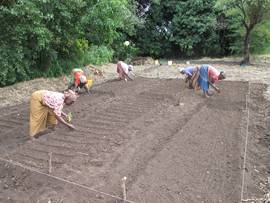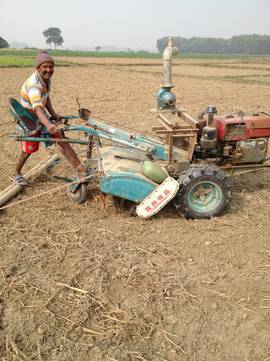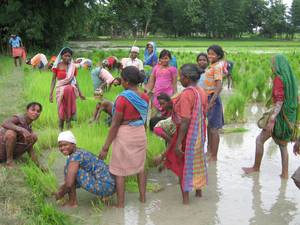The Concept of Integrated Rural Development
 |
Over the last decades, the disappointment over the results of past development efforts in many countries has been growing. Nobody brought it more emphatically to the notice of the general public than the late director of the World Bank, Robert McNamara, who said that: “in the 40 developing countries for which data are available, the upper 20 per cent of the population receives 55 per cent of the national income, while the lowest 20 per cent receives 5 per cent only”.
This gap between rich and poor has only been widening so far, and, in many cases, has led to worse conditions for the poorer segments of the population. The traditional socio-economic environment of the rural population has often been destroyed without being replaced by a better alternative. The increasing population could not be absorbed by the existing rural system, this leading to massive migration to cities, and resulting, in many cases, in a virtual breakdown of urban societies. Measures for increasing agricultural production concentrated on the improvement of land productivity in the better areas with larger farms, leaving behind the poorer masses in the rural areas.
Growing gaps
 |
It is noteworthy that the increasing differences between haves and have-nots generated by past development are not restricted to the widening gap between rich and poor. The same growing dualism can be observed between regions within countries, and, on a world-wide scale, between industrial and developing countries. This challenge is also reflected in the recently approved Global Goals for Sustainable Development that asks for addressing the inequality within countries and between rich and poor countries.
In the final analysis, the reason for the very unsatisfactory results of past development efforts seems to lie in the basic approach. This approach promotes development by applying mainly economic principles derived from experiences in donor countries. Still it was not fully realized that the conditions in developing countries were far more different, as regards for instance factors like
•the rate of population increase,
•the degree of international communication,
•the educational level,
•the availability of new technologies,
•the value system of the population,
to mention only a few examples.
The reassessment of development strategies during the last years tried to surmount the trial-and-error period and to use the experience of the past to design a new strategy which, it is hoped, might yield better results. For the development of the rural areas, during recent years, the concept of integrated rural development has been widely accepted, and the aim of this paper is to introduce this concept and the problems of its operationalization.

